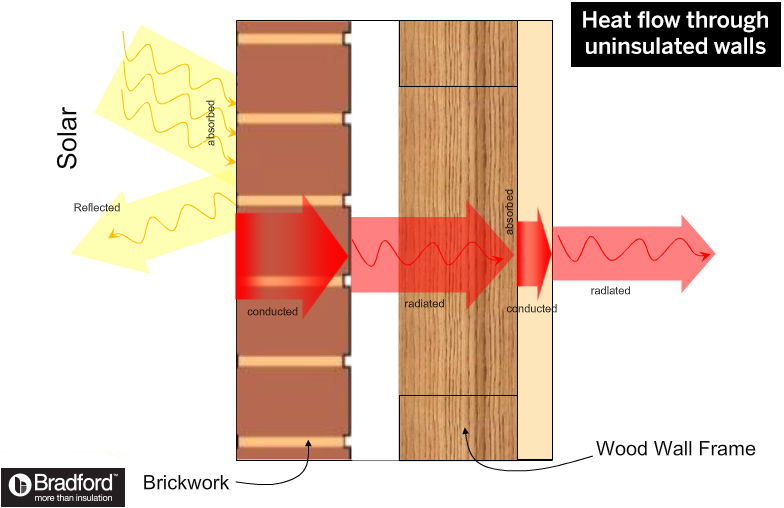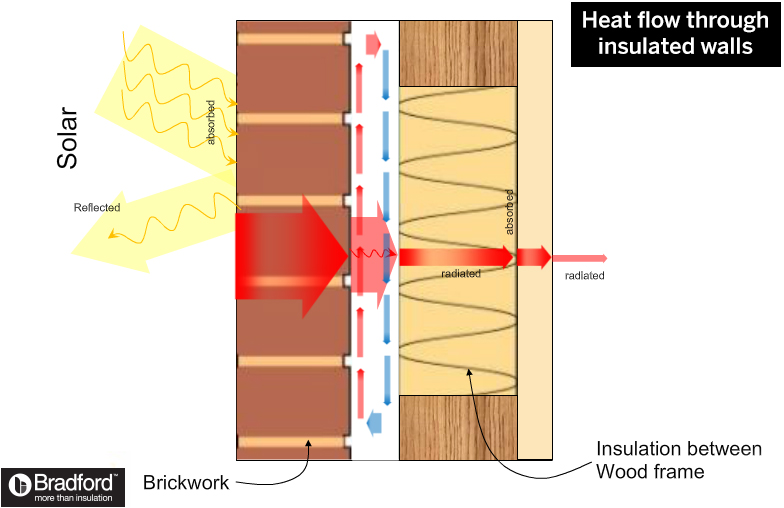How heat flows through walls
In a wall with no insulation, the external wall will absorb the radiant heat of the sun and radiate this heat through the plasterboard to the internal living areas of the home. . In winter, this situation is reversed with your warm indoor air moving through the plasterboard and outside of the home.

However, if your walls are insulated, you can dramatically reduce this heat gain and loss. Insulation in your external walls will mean that the hot air will circulate in the air cavity, losing energy. What is left is then absorbed by the insulation – the amount of heat absorbed will depend on the R-value (resistance value) of the insulation installed. Then a small amount of heat will be passed through to the living space. Again, in winter, this process is reversed to keep your precious warmth within your home.

Learn more:
Heating & cooling account for around 38% of a typical home's energy use. Bradford's systems can help improve your energy efficiency. More >



